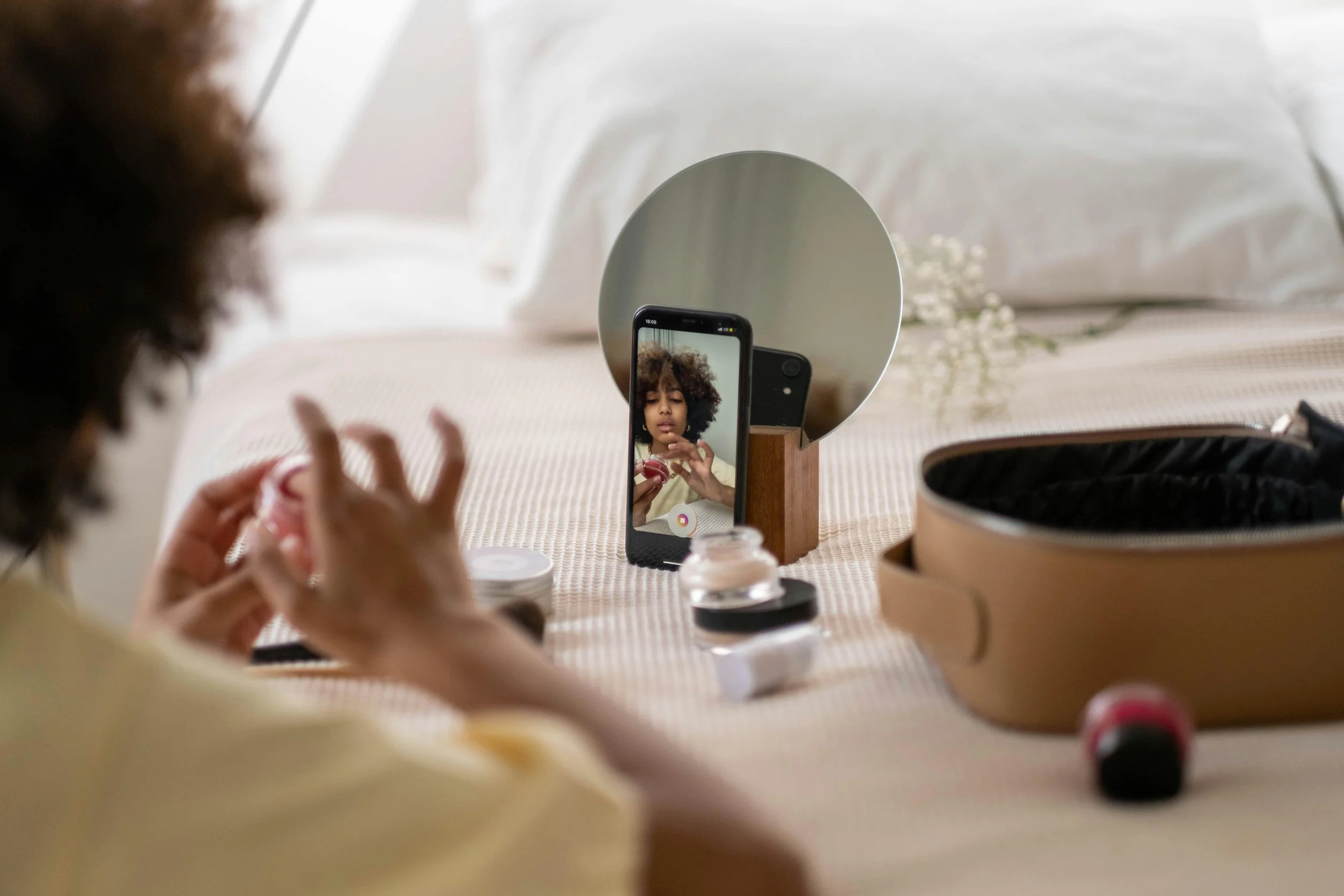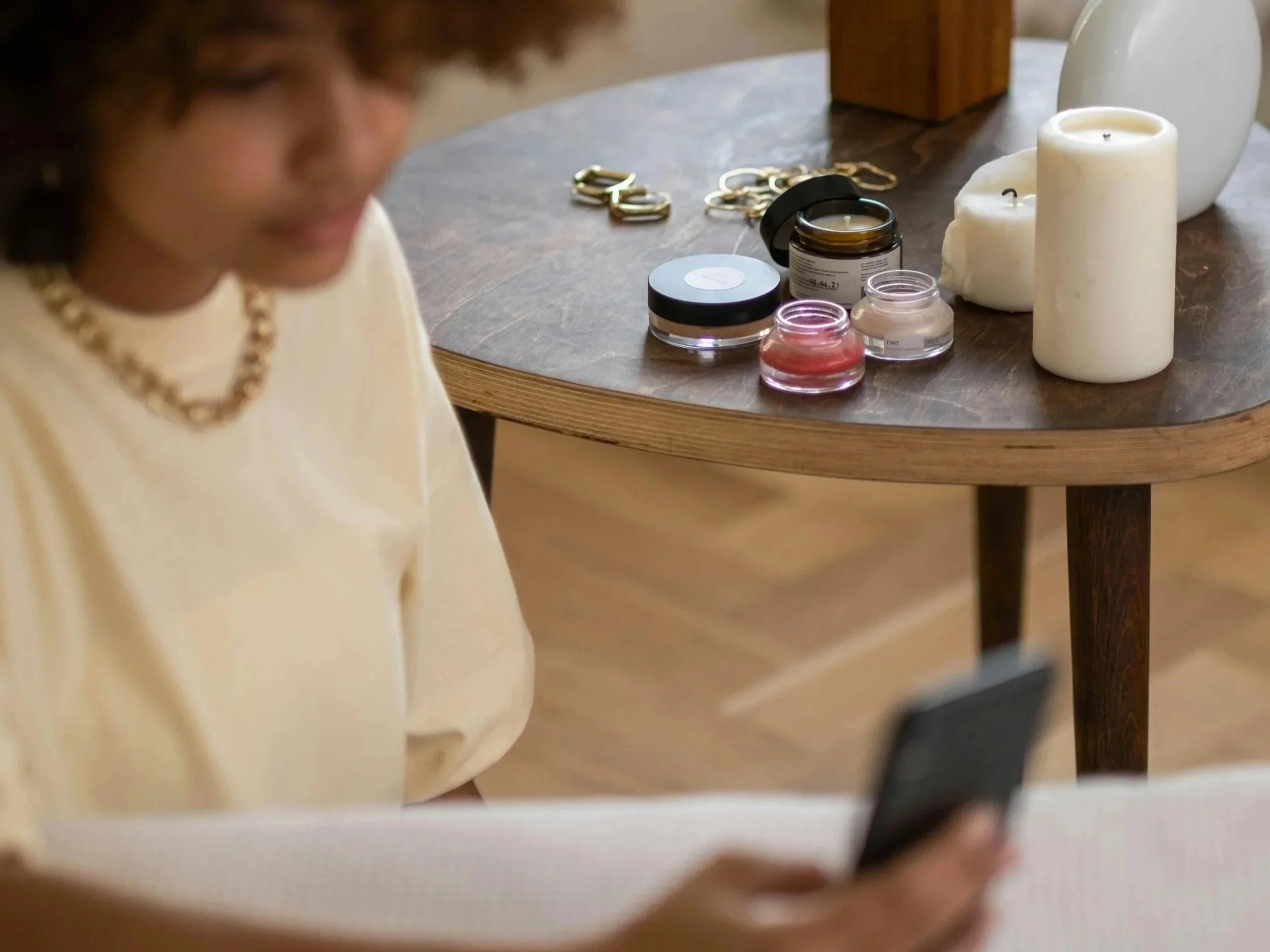How to Start a Skincare Brand as an Influencer
You’ve been in and around the skincare industry for some time now, testing different products and bringing joy (and of course, expertise) to your followers’ days. Since you’ve landed here, I have a growing suspicion you wish to create something of your own rather than only checking out what others are making.
You’re in the right place! Today we’ll look at how to start a skincare brand as an influencer and go through the process of making your dreams come true.
Let’s pause the dreaming for a moment and get to the action!
Table of Contents
Key takeaways
Here’s a quick look at how to start a skincare brand as an influencer.
Know your strengths: a trusting audience and powerful brand building,
Clearly define your brand’s mission and vision to work as guiding lights for the business,
Research the market to stay in the loop with the industry and learn from your competitors to differentiate your brand,
When you start off, create a selection of hero products that address your customers needs,
Choose a trusted private label skincare partner or manufacture your products in your own labs,
Launch your brand by using your strengths and knowledge in the industry.
A step ahead of competitors
As a beauty creator you already have multiple advantages over someone who’s only looking into how to enter the beauty market. The tricky part is how to use these advantages to their full potential and make your new brand benefit from them.
Let’s check out where you might have an upper hand and how to fully leverage it!
Having an established audience
In your journey in the beauty space, you’ve already done the hard work that might take the newbies a long time — you’ve won the loyalty of hundreds, if not thousands or millions, of followers.
For example, did you know that the most viewed beauty brand on Instagram is Huda Beauty? You might also know that this brand was made by a prominent beauty influencer Hudda Kattan, showing how big of an impact your existing audience can have when you launch your own brand.
It’s a big win for your brand because as a creator you’ve built trust and established a bond between you and your community. Your fans have had your back thus far, so it’s safe to say they’ll be lining up for your products once you make the jump and create your own skincare.
Many new and aspiring beauty entrepreneurs would kill for that, but not only because of the emotional bond and trust. Especially in the beginning, having an audience will also lower your customer acquisition cost because they are drawn to you organically. That means you won’t have to spend as much money on expensive skincare marketing and advertising campaigns. And that’s a massive win-win for you!
Understanding of brand building and promotion
Lights, camera, action — your brand is everything! It’s all aspects from what content you put out, how you speak, dress, interact with fans, and much more. All of these standards you put up, definitely gives you a good grasp of what it means to build a brand.
But now it’s gone from building your personal brand to building a brand for your products. Depending on how you wish to operate, some features of your personal brand might overlap with your skincare products too. For example, you could model or showcase for your brand or even be the face on the packaging. As I said, it depends on how involved or synonymous with your beauty brand you wish to become.
Steps on how to start a skincare brand as an influencer
Now that we know your advantages and strong points, let’s get to the real deal and find out how to turn your dreams about a skincare brand into reality!
Define your beauty brand’s mission and vision
First on your quest to figure out how to start a skincare brand as an influencer, should be defining your mission and vision statements. These will be the core of your brand and help you navigate not only the very beginning stages of creating a beauty brand, but also aid you in tricky business situations in the future.
Your mission statement should address the purpose of your brand. To shape the mission answer these questions:
What is your brand’s purpose?
What problem does your brand solve?
Who are/will be your customers?
When you honestly approach these questions, your mission should start to crystalize. For a a creator beauty brand it might sound something like this:
Our mission is to create affordable organic skincare to empower environmentally-conscious women in their early and mid-twenties to feel good in their skin.
The mission is to bring high-performing anti-age cosmetics for people over 40 who feel forever young.
Your vision, on the other hand, should communicate the big picture — the brand’s actionable steps for the future. Here I’ve also compiled some questions for you to answer to reach the vision of your brand:
What does your brand want to achieve long-term?
Where do you see your brand in 5-10 years?
How could your brand change the skincare industry?
Once you’ve pondered about the future, your vision might look something like this:
Our vision is to become the leading organic skincare brand that inspires people to make healthier and more sustainable choices.
The vision is to spearhead the youth’s skincare industry by educating our customers about beauty and skincare every step of the way.
My biggest suggestion is if your mission or statement doesn't sound right on the first go, try again and again until you hit the sweet spot and think: “This sounds exactly like my brand!”. Say it out loud, talk to your friends or family to bounce ideas, but really do refine it until it seems right. There’s no shame in experimenting!
Research the market
Next, you’ll want to research the skincare market to stay in the loop of what’s happening around you and take some valuable lessons from other brands that you could keep in mind while building yours.
Understand your target audience
Your mission statement should’ve helped you define who you’re selling to, your target audience. But it doesn’t stop there because you should not only define it, but also understand your audience on a deeper level.
As a creator, you have an established follower base that could be a part of your target audience. That gives you a gold mine of insights already! You should carefully go through your audience’s demographics (age, gender, location, income level), behaviors (what do they react to best from your existing content, what resonates), and feedback (what advice they’re asking in the DMs and comments, what’s the most popular beauty problem they address).
Given what you’ve noticed about your own followers, you can then proceed to make the ideal customer profile by writing down:
Name (optional), age, lifestyle,
Your customer’s beauty goals,
Your customer’s pain points,
Where your customer shops.
The goal of creating a customer profile is not to solely play around (arguably, that’s fun too), but to “put a face” to your audience that you see whenever you’re making decisions for your brand, starting from skincare marketing to all the way to product pricing. This persona is a symbol of your customers that are impacted by your brand and how you decide to shape it.
Analyze the competition
In market research, checking out your current audience is great, but you should cover all bases and see what your competitors are up to as well. This will help you understand the industry itself a little better too.
Start by identifying your competition. For you, most likely these will be other influencer’s beauty and skincare brands. And there might be more depending on your specific niche.
Once you’ve identified your competitors, you’ll want to look at their branding. What kind of messaging are they going with? How do they present themselves throughout the customer journey (website, ads, social media)? This step could give you great insights on how to differentiate your own branding to not blend it with the rest by checking out what they’re not doing yet.
Then, analyze their products. See what they’re offering, what’s their focus in product selection, what ingredients they use, and what prices they set for their products. In pricing, it’s especially important to know where you stand as there are multiple pricing strategies, with competitive pricing being one of the most popular ones. Competitive pricing means that you set your prices based on the prices of your customers.
You can analyze and research your competition even further and go through their marketing efforts, how and where they communicate with customers, and even analyze their biggest failures to learn how to stand out in the skincare industry and not make the same mistakes.
Source your products
You now should know not only your own brand but also the competitors a little better. As an influencer in the beauty space I’m sure you’ve tried and tested your fair share of skincare products and already know a lot about ingredients and formulations.
Now it’s time to put all that knowledge to good use and work out what products your beauty brand will offer.
Create a product selection
To start creating a product selection, we need to circle back to our customer persona. Think, what do they want, what’s their biggest skin concern and what’s their purchasing power. When you have these questions answered, you can create a list of products or their ingredients that will address your customers’ needs.
Let’s say your customer persona is a middle-class woman in her mid-20s with sensitive skin whose biggest problem is finding products that don’t irritate her skin and cause breakouts. For the sake of this example, I’ll be checking out private label skincare (we’ll talk more about that in just a second) and more specifically Selfnamed products.
Looking at our customer persona I noted down some potential products for a skincare line:
Sensitive Skin Oil-To-Milk Cleanser. I chose this product because it’s great for people with sensitive skin and will leave their face feeling fresh without drying it out.
Sensitive Skin Moisturizer. Not only is this moisturizer suitable for sensitive skin types, it also goes well with our chosen cleanser, as you always want to moisturize after cleansing. You could even think of bundling these products together in a set.
Microbiome Prebiotics Face Mist. This is another refreshing product your customer is likely to enjoy with its hydrating and balancing properties, and will be useful for people who are concerned about blemishes.
This wasn’t that hard, right? You should do this exercise for your brand too, based on your customer persona and their needs.
A suggestion from my side when it comes to the initial product selection is less is more! Don’t overwhelm your first customers straight away by offering 20+ products. Choose up to 5 hero products you’ll begin with. It’s better to launch a smaller selection that you’re confident in rather than a plethora of products that you’re not quite sure about.
Private label vs custom formulas
Once you’ve brainstormed the products your customer needs, we need to figure out how you’ll make them. You have two main options: working with a private label skincare partner or formulating your own formulas.
What’s private label skincare (or skincare dropshipping)? It means that you’re working with a third-party partner, like Selfnamed, who have already formulated high-quality skincare products under professional chemists’ supervision which you can sell under your own branding. This method requires no or very low upfront investment, making a great choice for skincare influencers entering the skincare industry.
You can also choose to create custom formulas for your skincare products. This method will require a more significant upfront investment as this way you need to hire chemists, acquire a lab, buy raw ingredients, and more. At the same time, formulating your own products can give you broader control over the formulating process.
Make a launch strategy
Whoa, it seems like we went through a lifetime in this article, from creating your brand’s identity all the way to figuring the products you’ll sell. All that’s now left is to create your launch strategy. Let’s see how to start paving your entry into the influencer skincare industry.
Use your organic platform
Your numbers on social media already show that you know how to use your voice and platform right. Do the same before launching your beauty brand and use your organic platform to work for you.
Maybe you could tease something new and exciting coming on your accounts? Or perhaps you’ll create a separate account for the brand and encourage your followers to follow it before the big launch? You could even make content with an unreleased product of yours in content to create hype around the brand that way.
The opportunities are indeed endless, but it depends how you use them. With a fresh mind, look at your socials and see what the best approach of using your existing accounts could be!
Start marketing efforts
You could also go more of a traditional marketing and PR way. Keep in mind this might require additional members to your team to help with this.
Your hunting grounds are mainly online since you’re an influencer and that’s where your primary brand activities will be too. That’s where people are familiar with you and you can use that to your advantage. Think, press releases, a fresh website or an e-commerce site, e-mail lists, ads, and more.
But you can also go offline to reach more people. Depending on your financial abilities, you can also go with posters and banners on the street, ads on the radio or TV, and other activities that don’t fall under the digital skincare marketing umbrella.
Final thoughts
Starting your own skincare brand as an influencer can be challenging, but the good news is you're several steps ahead with your established audience, as well as the trust your followers have given you.
My advice is to build your brand confidently and make choices that feel true and right for your brand and yourself, while keeping your customers and their needs at the top of your mind.
Now, go make your dreams happen! Good luck!
Frequently asked Questions
-
If you choose to work with a private label skincare partner like Selfnamed, the upfront cost can be as low as $0. However, if you wish to formulate your own products, you need to look at labor and other administrative costs you’ll have to cover upfront.
-
Absolutely you can! You can choose products from your private label partner’s selection and add your branding to them. Your partner will take care of the production, packaging, and shipping. It’s that easy!
-
It depends on your approach! You can start selling private label skincare in minutes or days by finding a partner, setting up a website, and marketing your products. If you wish to take a more complex approach and spend more time on refining your website or doing more marketing activities, it might take a couple of weeks.
-
It’s important to find a partner you can fully trust. You can go with a private label skincare company like Selfnamed. We specialize in helping businesses build successful beauty brands with customizable, high-quality products made from natural ingredients.
You’ll want your manufacturer to offer cost-efficient pricing, produce thoroughly tested, high-quality products your customers enjoy and provide customization options for white label product’s packaging.
Must read










